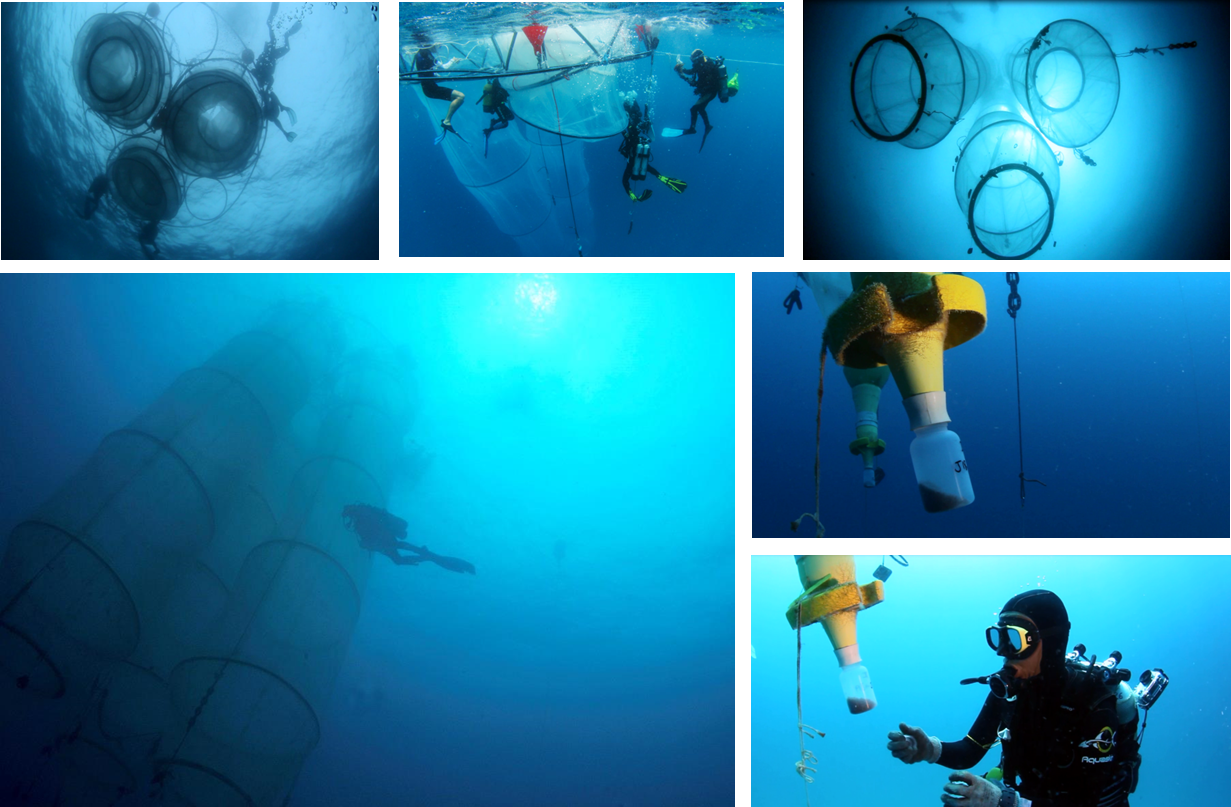Coordination : Sophie Bonnet (Senior scientist IRD)
L’objectif du projet VAHINE est d’étudier le devenir de l’azote fixé dans le réseau trophique planctonique océanique et son impact potentiel sur l’export de carbone. La campagne VAHINE s’est déroulée dans le sud-ouest du Pacifique (Nouvelle-Calédonie) en 2013, à laquelle ont participé 45 scientifiques de France, d’Israël, d’Allemagne et des États-Unis.
VAHINE est financé par l’ANR (ANR Jeune chercheur S. Bonnet), le CNRS INSU-LEFE, le GOPS et l’IRD.
Les résultats scientifiques issus de VAHINE sont publiés dans 16 articles regroupés dans un N° spécial dans la revue internationale Biogeosciences
 |
Biogeochemical and biological response to a diazotroph bloom in a low-nutrient, low-chlorophyll ecosystem : results from the VAHINE mesocosms experimentEditor(s) : S. Bonnet, D. G. Capone, F. Lacan, and E. Marañón Biogeosciences Abstract : The goal of this special issue is to present the knowledge regarding the fate of N2 fixation in the oligotrophic ocean based on the large data set acquired during the VAHINE experiment. VAHINE was a multidisciplinary project involving close collaborations between biogeochemists, molecular ecologist, chemists, marine opticians and modellers. In marine ecosystems, biological N2 fixation provides the predominant external source of nitrogen (N; 140 ± 50 Tg N yr−1), contributing more than atmospheric and riverine inputs to the N supply. Yet the fate and magnitude of the newly fixed N, or diazotroph-derived N (hereafter named DDN) in marine ecosystems is poorly understood. Whether the DDN is preferentially and directly exported out of the photic zone, recycled by the microbial loop and/or transferred into larger organisms remains unclear. During VAHINE, triplicate large volume (∼ 50 m3) mesocosms were deployed in the tropical south-west Pacific coastal ocean (New Caledonia). A total of 47 stocks, fluxes, enzymatic activities and diversity parameters were measured daily inside and outside the mesocosms by the 40 scientists involved in the project. The special issue details the major experimental and modelling results obtained during the project regarding the evolution of the main standing stocks, fluxes, plankton diversity and activity over the 23-day experiment, the contribution of N2 fixation to export fluxes, the DDN released to dissolved pool and its transfer to the planktonic food web (bacteria, phytoplankton, zooplankton). Finally, a synthesis study attempts to summarize the knowledge and the unresolved questions regarding the fate of DDN in the ocean to synthetize and link the major experimental and modelling results obtained during the project. It reconciles the diverse and complementary methodological approaches used in this study to answer the scientific questions of the VAHINE project. |
|
|






